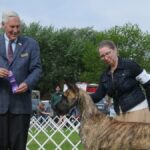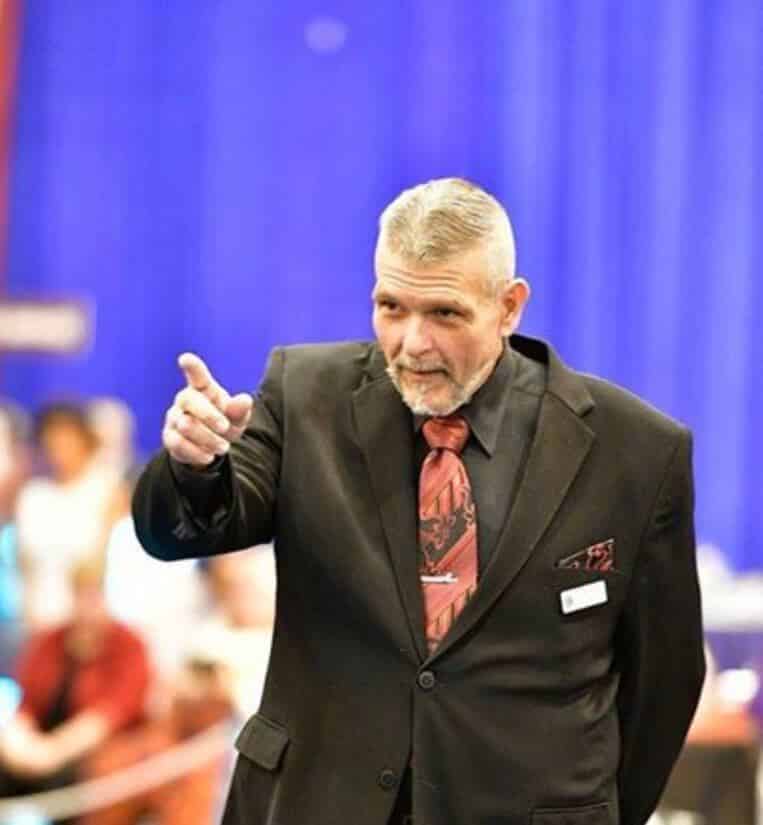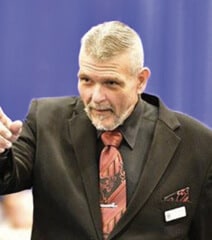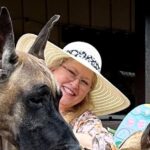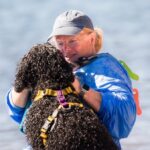Interview with Herding Group Judge David Anthony
No one enjoys the world of purebred dogs more than I do. Since the early 1980s, I have traveled across the country to attend dog shows. (Remember when you drove for two days to national specialties to learn about a breed?) I have served as the Chairman of the Judges Education Committee for the Cardigan Welsh Corgi and wrote the quarterly AKC Gazette breed column for a number of years. When I stand in the center of the ring, I know that I am in a good place and I have a smile on my face (pre-pandemic, obviously). And I love judging a great deal. I have added the Non-Sporting Group to my duties and I continue to add various breeds in other Groups that I find interesting. No one enjoys judging Juniors more than I do. The dog show world is my fun—and I want to keep it that way.
Where do I live? How many years in dogs? How many years as a judge?
David Anthony: I live in Girard, Pennsylvania, just south of Lake Erie. (Yes, we get a lot of snow.) Our first show dog was in 1983 and I have been judging since 2001.
What is my original breed? What is/was my kennel name?
David Anthony: Still my favorite breed; the Cardigan Welsh Corgi. Our kennel name is Dragonpatch. This comes from my childhood. When asked what I wanted to be when I grew up, I would respond, ”A Dragon Patch.” The symbol of Wales is a dragon and a patch is something that grows, so it made perfect sense to use that name when we were deciding on various choices.
Can I list a few of the notable dogs I’ve bred? Any performance or parent club titles?
David Anthony: Our first Group One winner was CH Dragonpatch Mystic Minstrel (Emmie). She won multiple Group Ones and was listed among the top five Cardigans for several years.
Disillusioned with the then-current breeding stock in the US, we decided to seek out what we liked overseas. NL BISS/NZ/NL/US CH Copperleaf Burnt Spice (Simon) was imported from Europe after doing so well in New Zealand. “Simon” was instrumental in producing Cardigans of proper bone for our breeding program.
What are the qualities I most admire in the Herding breeds?
David Anthony: I admire that sparkle in their eye as they work with their families in various capacities. Whether rounding up stock, watching the children, or keeping an eye out for the UPS man, they have a certain quality that only Herding Dogs have. Then, to see a quality example gait around the show ring in proper style is certainly an admirable quality.
Have I judged any Herding Group Specialties?
David Anthony: I have been honored to adjudicate regional specialties for Old English Sheepdogs, Australian Shepherds, German Shepherds, Shelties, Bouviers, and several others. I have judged national specialties for Pyrenean Shepherds, and my biggest honor, Cardigan Welsh Corgis in Portland, Oregon, a few years ago.
Do I find that size, proportion, and substance are correct in most Herding breeds?
David Anthony: Overall, I would say, “Yes.” I do believe that Shelties are getting far larger than in the past, with tails that are far too short. This appears to be a problem in the breed, while Bouviers and Briards seem to be getting smaller in stature. I would hope that breeders will address these concerns.
Is breed-specific presentation important to me as a judge? Can I offer some examples?
David Anthony: I can’t imagine a judge who wouldn’t feel that breed-specific presentation is important. A prime example is the Border Collie. As it gaits around the ring, the head should be somewhat down. Many handlers are hung up on trying to show a dog with its head strung up, and flying around the ring. Needless to say, in my ring, the example of showing the correct presentation will certainly have my attention.
What about breed-specific movement? Do I demand this from Herding Dogs?
David Anthony: The correct movement of a “square” dog, as designated in their individual breed standards, will move in a different manner than the others. The reach and drive should not be exaggerated like that of the German Shepherd or Australian Shepherd. These dogs reach out farther in the front and extend more in the rear. Although a Belgian breed that goes around the ring with extended reach and drive may look pretty and eye-catching to a novice judge, it is not correct for the breed and should not be rewarded on that merit. Any good Herding judge should be well-attuned to the breed-specific movement and use it as a determining factor in their overall placements. I always say that if you want to be competitive in the Herding Group ring, you have to be able to move well. Those who are just taking their dog for a walk around the ring will never succeed.
Are the Herding breeds in good shape overall? Any concerns?
David Anthony: I would say that, overall, the Herding breeds are doing well. The biggest problem I see is the loss of dedicated breeders and exhibitors of the more difficult breeds to maintain. The OES and Bouvier entries have dropped off significantly. No one wants to put the time and effort in to grooming some of these breeds that are in danger of becoming relatively unknown in the breed ring. Many of the newer breeds in the Group are wash-and-wear show dogs and are easy for handlers to add to their clientele base. It is a rare occasion to have a complete entry of Herding Dogs in the Group ring, even at some of the larger events.
In my opinion, how do today’s exhibits compare with the Herding Dogs of the past?
David Anthony: I feel that show dogs, in general, are doing well, and fine examples are out there representing their breed. My breed, the Cardigan Welsh Corgi, has made huge advancements in quality since I have been involved. In the early days, I would look at the entry and feel bad for the judge. Good dogs are easy to judge, poor examples are difficult to separate out, as you have to decide what you are willing to “give on” within the standard.
Why do I think Herding Dogs can often become outstanding Show Dogs?
David Anthony: When you combine grace, beauty, and intelligence with a strong desire to please while doing a job, it would be difficult to not think of a Herding Dog. A well-bred and properly exhibited German Shepherd is truly a thing of beauty, as is a Swedish Vallhund from the other end of the Herding Group.
Just for laughs, do I have a funny story that I can share about my experiences judging the Herding Group?
David Anthony: This wasn’t in the Group ring, but while doing an (in-ring) observation for German Shepherds with George Hietzman, he had Jimmy Moses exhibiting. Those who remember George know that he had a great sense of humor. As Jimmy stacked his dog, George whispered to me, “Watch this.” After the hands-on exam, he asked for a down and back. Upon the return, George said, “Oh my, sir, your dog is moving oddly. Could you do that again?” Jimmy obliged with another down and back. George shook his head and remarked that something was amiss with this dog. Jimmy looked at him and said, “Well if the dog’s that bad, excuse him.” George said, “If I excuse him there’s no way I can give him a piece of the Group now, is there?” He continued, “If you can get him around to the end of the line, perhaps I’ll consider leaving him in.” Needless to say, the dog took Group One that day, and Jimmy and George had a good laugh at the photographers stand. I learned that day that a good sense of humor helps to make the job of judging that much more enjoyable.
